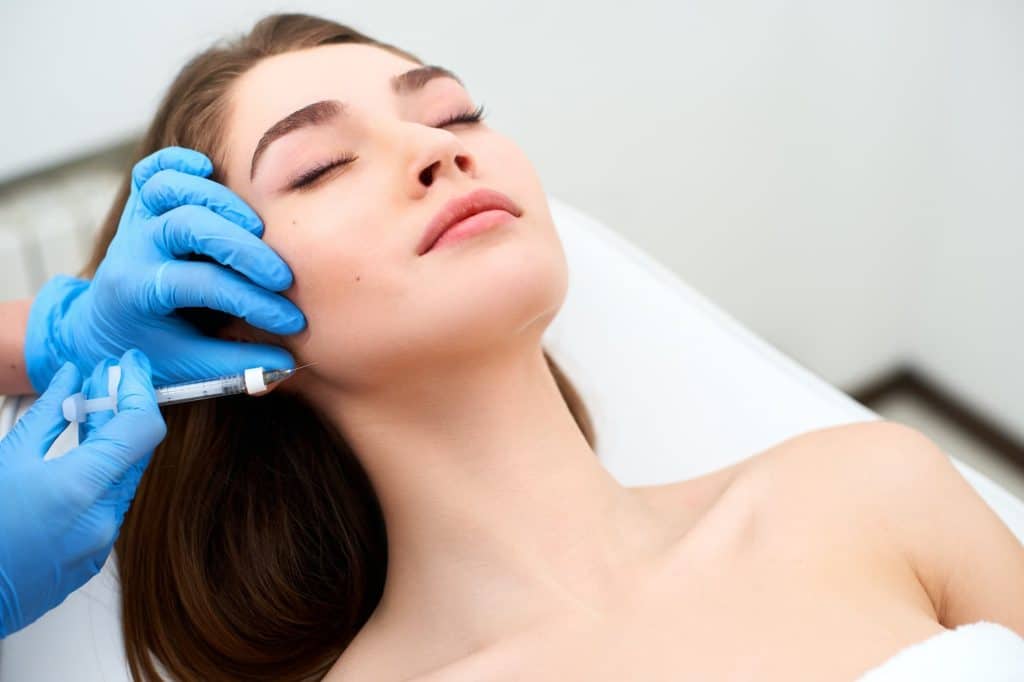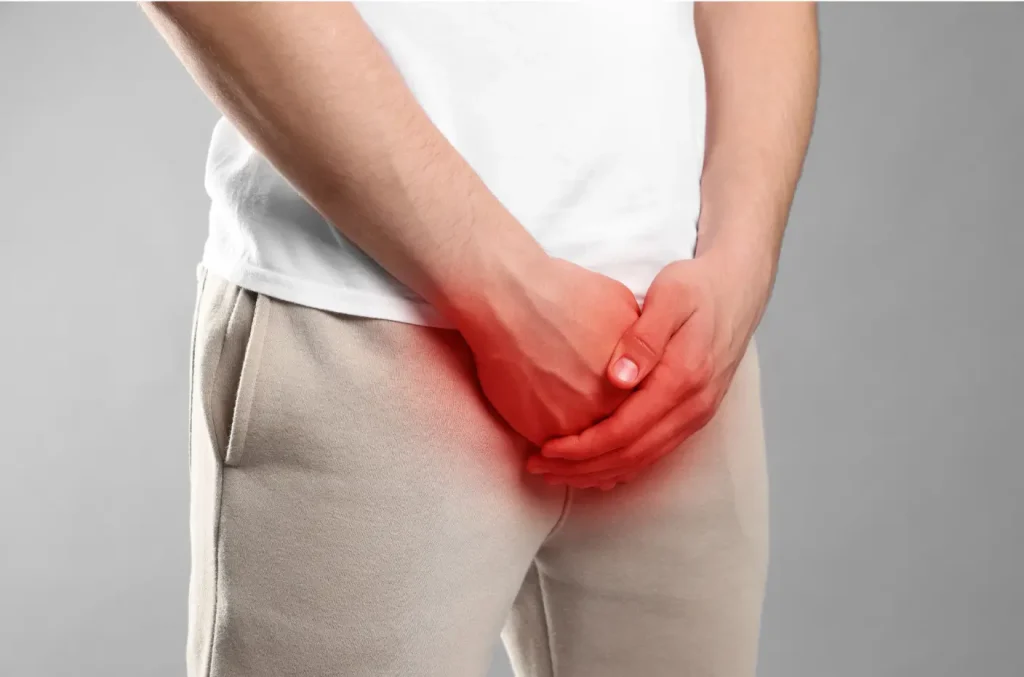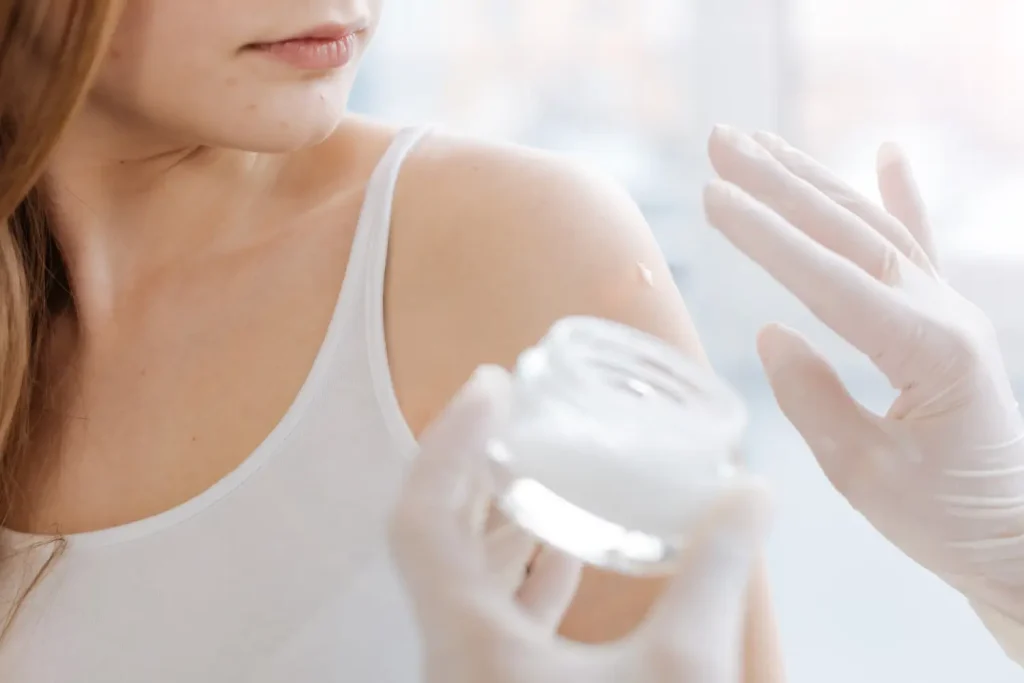So, Botox. We’ve all heard about it, and we know it’s used for cosmetic purposes. But did you also know that Botox was initially designed for treating strabismus (crossed eyes) and only later started being applied in cosmetic procedures?
Botox has revolutionized the field of cosmetic treatments, effectively reducing the appearance of facial wrinkles and fine lines. Its application involves injecting small amounts of the neurotoxin into specific muscles, temporarily paralyzing them and resulting in a smoother, more youthful appearance.
Today we are going to explore the use of Botox in the jaw, or better said, the masseter muscle. We’ll mostly talk about its applications and benefits but also go over some possible side effects.
What Is Masseter Botox?
Botox, an onabotulinumtoxinA-based injectable, is a neurotoxin and a muscle relaxant. It is typically used to prevent wrinkles caused by persistent muscle contraction, also known as dynamic wrinkles. While this isn’t its sole application, it’s what makes Botox such a popular and highly sought-after cosmetic treatment.
The masseter is a muscle that connects our lower jawbone with the cheekbone and helps us chew. When these muscles are under tension, like from constant teeth grinding, it can lead to their enlargement and cause our jaw to look bigger than it should. This is where Botox comes into play. To alleviate jaw tension and cause the muscles to atrophy a little, Botox neurotoxin is applied to relax them. Masseter isn’t a brand of Botox but instead stands for the procedure of applying Botox to the masseter muscle, also known as Jaw Botox.
While the term “Botox” refers to both a brand name and a product developed by Allergan, they were not the only ones to develop botulinum toxin neuromodulators, and while the treatment of injecting Botox into the masseter muscle is known as Masseter Botox, you are not limited to using only Botox.
We use Botox as a catch term to encompass all neuromodulator-based injectables. Products produced by Botox’s competitors, such as Dysport, Daxxify, Jeuveau, and Xeomin, can also be used for the same treatment.
How the Jaw Treatment Works
There’s not much separating this treatment and any other Botox procedure. The key differences are where the Botox is applied and how many units you need to use.
During the procedure, a trained healthcare professional will identify the size of the muscle and the precise points to inject the neurotoxin into the masseter muscle. The professional has to make sure not to hit the risorius muscle, which would affect the patient’s smile. Luckily, even if that happens, the effect is temporary, but it’ll last a couple of months, which is highly inconvenient.
The treatment takes approximately 30 minutes and is relatively painless. Over the following days and weeks, the Botox in the masseter muscle takes effect, gradually reducing the muscle’s activity and promoting muscle atrophy. It takes between two to four weeks before the full effects are felt, and this is usually when the follow-up checkup will be scheduled to check if any additional touch-ups are required.
It’s important to note that the results of the treatment aren’t permanent and usually last between three and six months, so repeating it will be required to maintain the results. Depending on the person, it could take anywhere between 30 and 60 vials per treatment.
Benefits of Masseter Botox
The benefits of the procedure go beyond mere aesthetics, and it is frequently carried out for medical purposes as well.
As the masseter muscle relaxes and decreases in size, the appearance of a square-shaped jaw slowly returns to normal, giving it a more slender appearance. This is often done when the patient is looking for a more feminine look. Additionally, the reduction in muscle tension can alleviate other medical problems such as involuntary jaw clenching, teeth grinding (bruxism), muscle pain, temporomandibular joint disorder (TMD), and headaches.
Potential Side Effects
While Botox is FDA-approved for use on wrinkles, fine lines, and other medical and cosmetic procedures, it’s not approved by the FDA for use on masseter muscles, so the use is done off-label.
Common masseter Botox side effects include:
- Pain
- Swelling due to injection
- Bruising
- Muscle ache
- Flu-like symptoms
- Allergic reaction
- Drooling
- Crooked smile
- Blurry vision
- Trouble breathing or swallowing
Pain, swelling, and bruising are common side effects of anything injection-related and can happen even with something as simple as taking a blood sample. Muscle aches can happen due to your masseter muscles having trouble relaxing, and sometimes the effect can be so severe as to produce a toothache-like feeling.
Drooling can be caused by Botox being applied too deeply into the muscle, and a crooked smile can happen when the Botox is accidentally applied to the wrong muscle. In most cases, this can happen due to the inexperience of the medical practitioner, but the effects of Botox can sometimes spread to these areas even if it has been professionally applied.
The worst masseter muscle Botox complications will affect your vision and throat. They are extremely rare when you are not applying Botox to these areas, but can still happen. If, by any chance, you experience any issues in these two regions, go to the doctor immediately.
Most side effects last between a few days and a couple of weeks. If they last longer than that or start interfering with your daily life, consult with your pharmacist or a doctor.
Who Is a Good Candidate for Masseter Botox?
Anyone who has a problem with a tight jaw that causes grinding teeth, headaches, or TMD is an excellent candidate for this type of treatment. The ideal patient must have good general health and be free of any underlying symptoms that might prevent them from undergoing the procedure.
In relation to jaw reduction, the same criteria applies, however the patient should also have realistic, attainable goals. The viability of procedures of this sort will have to be decided on a case-by-case basis, where a medical practitioner will gauge if the patient’s goals can be achieved by using masseter muscle Botox, a combination of multiple procedures, through surgery, or a combination of these methods.
Conclusion
From an aesthetic perspective, this treatment can help reshape the jawline in individuals with an enlarged masseter muscle that creates a square-shaped or overly prominent jaw. By reducing the muscle size, the jawline can appear slimmer and more proportionate, resulting in a more balanced facial appearance.
Moreover, Botox in the jaw muscles can provide relief from various medical conditions associated with jaw tension. The relaxation of the masseter muscle can alleviate these issues and improve overall jaw comfort and function.
It is important to note that the results of masseter Botox are not permanent and typically last for a few months. Regular follow-up treatments are necessary to maintain the desired outcomes. Potential side effects are typically brief and mild, and the procedure itself is relatively quick and non-invasive.
FAQ
How long does Botox in the masseter last?
Like most Botox treatments, the effects typically last between four and six months.
Does Masseter Botox slim your jaw?
It does, but the effects will depend on the original size of the muscle.
Does Masseter Botox help jaw clenching?
By relaxing the masseter muscle, this treatment prevents the jaw from clenching and stops the teeth from grinding.
Reference:
- Botox Therapy for Hypertrophy of the Masseter Muscle Causes a Compensatory Increase of Stiffness of Other Muscles of Masticatory Apparatus; Dorota Mierzwa, Cyprian Olchowy, Anna Olchowy, Izabela Nawrot-Hadzik, Paweł Dąbrowski, Sławomir Chobotow, Kinga Grzech-Leśniak, Paweł Kubasiewicz-Ross, and Marzena Dominiak; Jun 2022
- Anatomy, Head and Neck, Masseter Muscle; Nicholas M. Corcoran; Evan M. Goldman; Jun 2022
- A Simple Botulinum Toxin Injection Technique for Masseter Reduction; Zhi Yang Ng (MBChB, MRCS) and Tiffiny Yang (MBBS, GDFM); Dec 2021
- Prevention and correction of paradoxical masseteric bulging following botulinum toxin injection for masseter hypertrophy; Shauna M. Rice (BS) Janelle S. Nassim (MD) Erin M. Hersey (DMD) and Arianne Shadi Kourosh (MD, MPHa); Dec 2021
- Lower facial remodeling with botulinum toxin type A for the treatment of masseter hypertrophy; Fernanda Homem de Mello de Souza Klein, Fabiane Mulinari Brenner, Maurício Shigeru Sato, Fernanda Manfron Batista Rosas Robert, and Karin Adriane Helmer; Nov 2014
- Evaluation of the Efficacy of Low-Dose Botulinum Toxin Injection Into the Masseter Muscle for the Treatment of Nocturnal Bruxism: A Randomized Controlled Clinical Trial; Zaed Ghassan Shehri, Issam Alkhouri, Mohammad Y Hajeer, Ibrahim Haddad, and Mohamad Husam Abu Hawa; Dec 2022
- Explanation of Timing of Botulinum Neurotoxin Effects, Onset and Duration, and Clinical Ways of Influencing Them; Mark Hallett (MD); Jul 2015





















